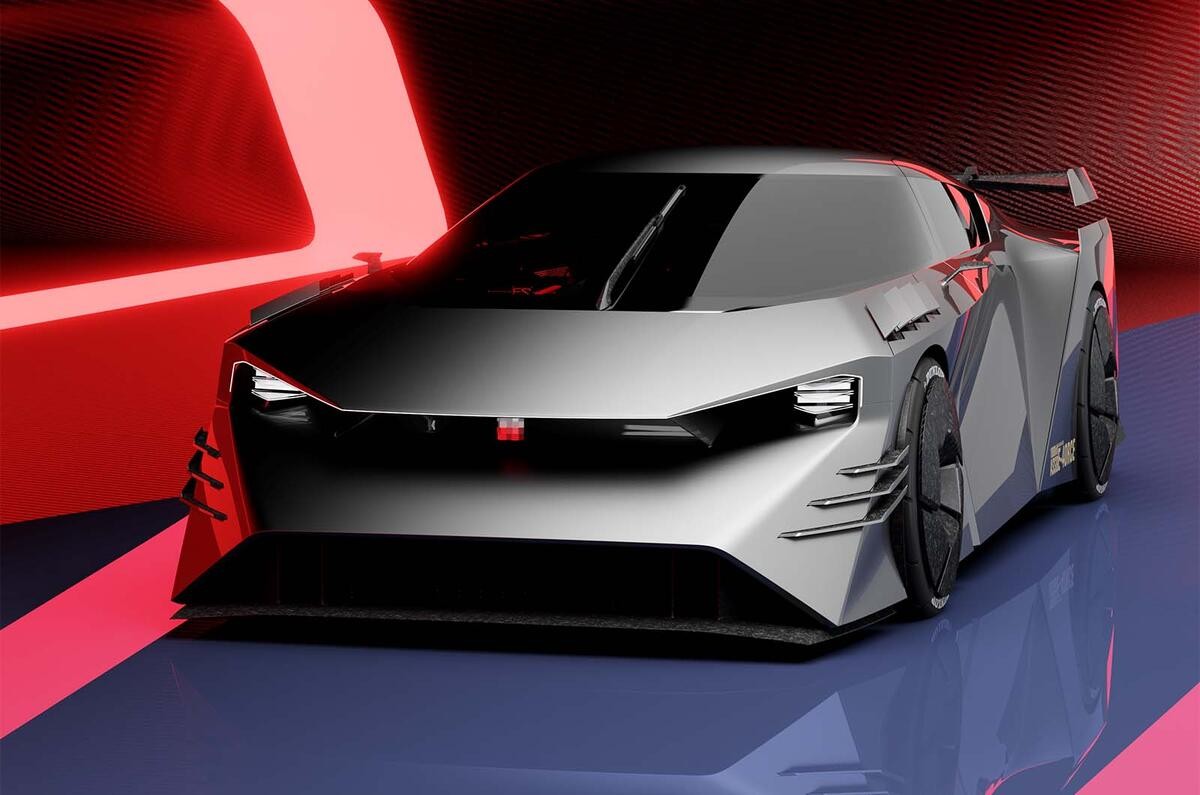Nissan is facing a crossroads regarding its iconic GT-R supercar. The company, once eager to introduce an all-electric successor based on the futuristic Hyper Force concept, is now “exploring different routes” for the next generation.
This shift comes just years after showcasing the mind-bending Hyper Force, envisioned as a brutalist, high-tech evolution of the GT-R lineage. Unveiled in 2023, the Hyper Force boasted an outrageous 1341 horsepower channeled through an all-wheel-drive system and powered by a cutting-edge solid-state battery. Nissan initially planned to build this radical concept into reality by 2030 as a replacement for the V6-powered R35 GT-R, which retired in 2025 after a remarkable 17-year run.
Now, however, Guillaume Cartier, Nissan’s head of product development and someone deeply connected to the GT-R’s European success story, states that there is “no clear plan” for a new supercar. While he personally supports the idea of continuing the GT-R legacy, practical considerations seem to be casting a shadow over this electric vision.
Shifting Sands in the Luxury EV Market
This pause on Nissan’s electrified supercar strategy aligns with broader challenges faced by luxury and sports car makers trying to transition to full-electric powertrains.
Across the industry, lukewarm demand for EVs within these typically gasoline-powered segments is forcing adjustments. Maserati recently scrapped its plan to offer an electric version of the MC20 supercar; Lotus has delayed plans for an electric Emira replacement; Porsche extended the life cycle of its petrol-powered 718 Cayman and Boxster; and Polestar put its high-performance, all-electric roadster on hold indefinitely.
Cartier didn’t explicitly link Nissan’s uncertainty to these market trends, but he did acknowledge that a new GT-R wouldn’t be a significant volume seller globally. He highlighted Europe (specifically the UK, Switzerland, and Germany) as key markets with genuine appetite for such cars, while other regions remain less enthusiastic.
The executive carefully framed Nissan’s options, emphasizing that “the impact and consideration of the brand” remains important despite the GT-R’s limited commercial potential. This suggests Nissan might view the next GT-R primarily as a halo car—a powerful symbol of performance and technological prowess designed to bolster the overall prestige of the brand rather than a significant source of revenue.
The future of the legendary GT-R remains shrouded in ambiguity, with Nissan weighing the allure of electrification against the realities of market demand and strategic priorities.
